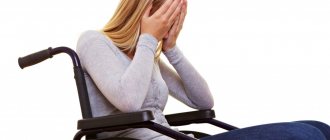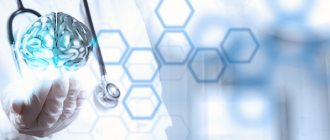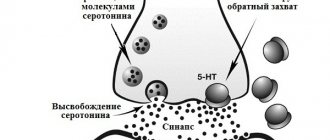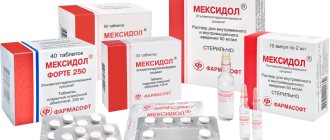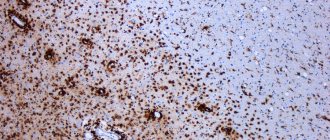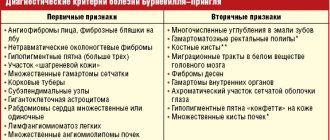A cure for multiple sclerosis has been developed in Russia
Russian scientists have developed the first domestic drug for patients with multiple sclerosis. The drug, called Xemus, is in final-stage clinical trials and could hit the market within three years. This medicine will be included in the compulsory medical insurance system and will be available to patients free of charge. According to the Ministry of Health, the number of identified patients with multiple sclerosis is constantly growing. So, from 2014 to 2015 there were 5 thousand more people.
Deputy Director of the Institute of Bioorganic Chemistry (IBCh RAS), Academician Alexander Gabibov, told Izvestia that we are talking about creating effective supportive therapy that allows a patient with multiple sclerosis to be socially active.
— Autoimmune diseases are akin to a state of oncological transformation; it is extremely difficult to cure them, and in some cases it is almost impossible. Among them, a special place is occupied by such a neurodegenerative inflammatory disease as multiple sclerosis. As the disease progresses, the patient develops autoantibodies against their own proteins, says Alexander Gabibov. He noted that the IBCh RAS xemus is being developed jointly with St. Petersburg.
According to Alexander Gabibov, there are currently few drugs for the treatment of multiple sclerosis; patients are mainly prescribed foreign drugs, for example, Copaxone. This remedy was invented by Israeli professor Michael Sela. He proposed a drug based on an irregular polymer of amino acids. Several generics are also used in Russia and around the world.
“We proposed a more specific therapy: we proposed loading peptide fragments of myelin basic protein into liposomes. Clinical trials show that it works, explains Alexander Gabibov. Now, according to him, the first stage of clinical trials has been completed. This work is being carried out jointly with the Institute of Neurology of the Russian Academy of Sciences, the Center for the Treatment of Multiple Sclerosis in St. Petersburg (City Clinical Hospital No. 31) and other medical institutions.
“These are exclusively Russian developments, they are patented,” emphasized Alexander Gabibov. According to his forecasts, the drug will appear on the market no earlier than 2021.
— Treatment with Copaxone currently used costs thousands of dollars. I think that our drug will be much cheaper,” noted Alexander Gabibov. According to him, xemus will be included in the compulsory medical insurance system and will be available to patients with multiple sclerosis free of charge.
According to the Ministry of Health, in 2014, 67,637 people with multiple sclerosis were registered in Russia. And in 2015, the number of patients registered increased to 72,767 people. The detection rate of multiple sclerosis continued to increase in 2021.
As the department told Izvestia, work on new drugs for multiple sclerosis is carried out regularly. Help for patients is provided by specialists from the Federal Research Center for Multiple Sclerosis, who participate in clinical trials of new drugs and medical equipment.
The head of the laboratory of neuroimmunology, head of the Center for Multiple Sclerosis at the Institute of Chronology and Radiology, Professor Igor Stolyarov told Izvestia that the first drugs for the disease appeared about thirty years ago, at which time the disease began to be diagnosed using MRI. The main drugs that influence the pathogenesis of the disease are produced abroad. In Russia, the development of an original drug has been underway for several years. And domestic biosimilars are already being used.
Igor Stolyarov emphasized that patients need a drug that is effective in the later stages of development of multiple sclerosis, since the effect of the drugs decreases over time.
“At first it works, and quite effectively, but after 10–15 years difficulties arise,” says Igor Stolyarov.
He noted that it takes about 12 years to create any drug, since the drug needs to be tested.
— The development of our scientists seems promising, but what will happen in the future is difficult to say. All clinical trials must be completed, all side effects must be documented, and effectiveness must be proven. But the fact that such work is being carried out gives hope,” said Igor Stolyarov.
Principles of drug treatment of multiple sclerosis
Therapy for this disease has three directions:
- Use of preventive medications;
- The use of drugs to relieve exacerbations;
- Symptomatic treatment.
Preventive medications help prevent the disease from getting worse. Interferons beta 1a, cytostatics, and monoclonal antibody preparations are used as therapy. These substances help control attacks of sclerosis. In combination with other drugs, DMTs effectively fight the disease.
Glucocorticosteroid hormones are used to treat the disease. Doctors use methylprednisolone, prednisolone, and dexamethasone. Pulse therapy is used (large doses in short courses). The technique is most effective with minimal side effects.
Symptomatic treatment is aimed at relieving pain, spasms, and bladder hyperresponsiveness. A list of medications for multiple sclerosis will be presented below.
Symptomatic treatment of multiple sclerosis
The doctor’s task is to make the patient’s life as comfortable as possible. Evidence-based medicine can reduce the number of exacerbations. At the same time, first-line drugs are difficult to tolerate by patients and have a sufficient number of side effects. Symptomatic medications can remove the negative impact of the disease itself and its treatment.
Painkillers
This type of drug relieves pain and inflammatory syndrome. Medicines are taken orally, there are capsules, tablets and sachets. There are rectal forms in the form of suppositories. In addition, injections for acute pain are acceptable.
| Diclofenac Used for pain in muscles and joints, pain syndrome of any localization | 75 mg twice a day or 150 mg once Duration of administration - no more than 14 days Cannot be used in children, pregnant women, in the acute phase of peptic ulcer disease, in severe liver and kidney dysfunction. Side effect: risk of gastrointestinal bleeding, toxic effect on the liver, cardiovascular complications. |
| Nimesulide (Nimesil, Nise) Pain syndrome of inflammatory nature | 100 mg twice a day Duration of administration – no more than 14 days. It should not be used in children, pregnant women, in the acute phase of peptic ulcer disease, or in cases of severe impairment of liver and kidney function. Side effects: gastritis, ulcers, toxic hepatitis, increased blood pressure. |
| Paracetamol Low analgesic properties, high anti-inflammatory properties | 500-1000 mg per day, maximum dose 4 g. Used in pediatrics and adolescents. Side effects: toxic to the liver, causes erosions and stomach ulcers. |
Muscle relaxants
Relieves spasms from tense muscles. Allows you to remove secondary pain syndrome due to muscle spasm. Tolperisone, baclofen, tizanidine are used.
| Mydocalm (tolperisone) Centrally acting muscle relaxant | Tablets 150 mg * 2 times a day, possibly intramuscular administration. No more than two weeks. Muscle spasm of any origin. Contraindications: children under 3 years of age, myasthenia gravis, individual intolerance. |
| Tizanidine (Sirdalud Tizalud) | 4 mg 2-3 times a day in tablets. For muscle spasms of skeletal muscles in MS. Contraindications: do not use for severe kidney and liver disorders. Side effects: drowsiness and dizziness. |
Anticonvulsants
Drugs of this series are used for symptomatic epilepsy in MS, with severe pain. Doctors may prescribe them for severe insomnia.
| Finlepsin | Seizures in multiple sclerosis. The dose is selected by the attending physician, and the drug is administered orally. Used in childhood. Side effects: drowsiness, dizziness, weakness. |
| Clonazepam | Anxiety disorders, insomnia, seizures, pain syndrome. The dose is selected by the attending physician and taken orally. Contraindicated in children and adolescents, during pregnancy, with impaired renal function, liver function, and glaucoma. Side effects: drowsiness, lethargy, disorientation. |
These medications improve mental abilities and help protect the brain from adverse factors. The level of evidence for these drugs is low.
| Cerebrolysin Used for damage to nervous tissue of various origins | Not used for epilepsy and severe renal failure. 5 ml intramuscularly or 10 intravenously, the duration of the course is determined by the attending physician. Side effects: rarely allergic reactions, rash, fever. |
| Cortexin Livestock brain polypeptides | Not applicable in case of individual intolerance. The doctor selects the course and dose, intramuscular administration only. Side effects: anaphylactic shock and other allergic reactions. |
The products are developed for the treatment of urinary incontinence. This symptom often appears in multiple sclerosis. Increases water absorption in the renal tubules. Provides an antidiuretic effect for 6-14 hours.
| Vasopressin | Do not use for renal failure or hyponatremia. The dose (in tablets) is individually selected by the doctor. Side effects: headaches and abdominal pain, nausea and vomiting. |
| Tolterodine | Do not use for myasthenia gravis, glaucoma, ulcerative colitis. The dose (in tablets) is individually selected by the doctor. Side effects: dry mouth, dizziness, dry eyes and dyspepsia. |
Medicines reduce blood viscosity and dilate peripheral blood vessels. Blood flow to organs and tissues increases.
| Pentoxifylline Trental | Circulatory disorders. Contraindications: heart failure, hemorrhages in organs and tissues, severe arrhythmias. Dose 5-10 ml intravenously or 100 mg tablets* 3 times a day orally, the course of treatment is individual. Side effects: hypotension, collapse, shock |
| Actovegin Diavitol Stimulator of tissue regeneration | Poor circulation and open wounds. Contraindications: individual intolerance. The dose is individual, usually 10 ml is used intramuscularly, the drug is available in tablets. Side effects: allergic reactions, hypotension |
This class of substances indirectly affects nervous tissue. The level of evidence for the drugs is low.
| Neuromidin Anticholinesterase drug Restores impulse transmission along the nerve ending | For multiple sclerosis to improve the regeneration of nerve tissue. The dose is individual, there are oral and intramuscular forms. Cannot be used under 18 years of age. Side effects: drooling, sweating, palpitations. |
| Cytoflavin Vitamin-like substances | Neurasthenia in MS. The dose is individual, used intramuscularly. Not for peptic ulcers, gout and hyperuricemia. Side effects: rash, itching, epigastric pain. |
They are represented by calcium channel blockers. Firstly, they dilate peripheral vessels. Secondly, medications normalize cerebral circulation.
| Cinnarizine For cerebrovascular accidents | Dizziness and tinnitus. Not for Parkinson's disease. The dose is selected by the doctor. Side effects: fatigue, headache, drowsiness. |
| Betagistine | Various types of dizziness. Do not use if you have an ulcer, pheochromacytoma, or pregnancy. The doctor chooses the dose. Side effects: damage to the mucous membrane of the stomach and intestines. |
Antioxidants
These substances are known to reduce oxidation. They also reduce the number of free radicals. Unfortunately, Mexidol has not confirmed its effectiveness in studies. Meanwhile, it continues to be used in domestic clinics.
| Mexidol | It is used for any post-traumatic or toxic effects on brain tissue. The dose and course are chosen individually. Not allowed in childhood or pregnancy. Side effects: allergies, rash, nausea, abdominal pain. |
Shilajit, honey, echinacea extract are general strengthening agents. Of course, there is no evidence base for them. However, they continue to be used not only by patients, but also by doctors.
| Apilak Royal Jelly | Asthenia. Dose: 1 tablet * 3 times a day, children are prescribed rectal suppositories. Contraindications: intolerance to bee products. Side effects: rash, itching, redness |
Patients with multiple sclerosis are known to suffer from phobias, anxiety and neuroses. In some cases, serious medications are required. And with the initial symptoms, you should take a sedative.
| Novo-passit | Neurasthenia, fatigue, decreased attention and concentration. One tablet 3 times a day, the duration of the course is determined by the attending physician. There is a release form in drops. Not for myasthenia gravis, acute gastric ulcer. Side effects: allergic reactions, drowsiness, fatigue. |
| Alprazolam | For depressive episodes, anxiety. Do not use if you have glaucoma, pregnancy, severe kidney or liver disease. The dose is determined by the doctor, the drug is taken orally. Side effects: drowsiness, dizziness, unsteadiness when walking. |
Antidepressants
Severe depression develops in 5-10% of patients with MS. But mild mood disorders are detected in almost all patients. Treatment is prescribed for moderate and severe forms. Remember that depressive episodes often end in suicide.
| Amitriptyline Tricyclic antidepressant | For depression and chronic pain. It is not recommended for severe decompensated diseases of the heart, liver and kidneys. The dose is determined by the attending physician, the tablets are prescribed orally. Side effects: dry mouth, constipation, urinary retention. |
| Fluoxetine SSRI | For depression and other disorders. Not for glaucoma, diabetes, or suicidal tendencies. The doctor chooses the dose, and the tablets are taken orally. Side effects: headaches, nightmares, emotional lability. |
"Glatiramer acetate"
Glatiramer acetate is one such drug. It has a rather complex composition - a mixture of synthetic polypeptides. The original manufacturers argued that it was unrealistic to replicate the medicine they developed without compromising the effectiveness of the treatment. Deviations from the composition of the starting substances during synthesis can lead to disruption of the molecular structure. This could change the pharmacological effect of this medicine on the body.
This problem has been resolved. Young talented biochemist scientists began research at the Department of Chemistry of Moscow State University, and then at one stage of the work they continued their development, using the support of F-Synthesis.
This direction is completely new in the treatment of multiple sclerosis in Russia.
